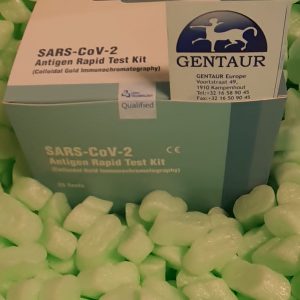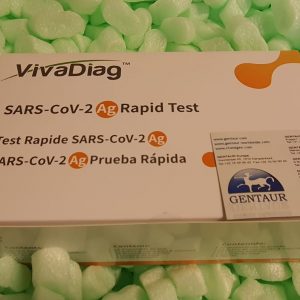Thrombosis is a acknowledged complication of Coronavirus illness of 2019 (COVID-19) sickness and is commonly related with poor prognosis. There is a well-recognized hyperlink between coagulation and irritation, nonetheless, the extent of thrombotic occasions related with COVID-19 warrants additional investigation. Poly(A) Binding Protein Cytoplasmic 4 (PABPC4), Serine/Cysteine Proteinase Inhibitor Clade G Member 1 (SERPING1) and Vitamin Ok epOxide Reductase Complex subunit 1 (VKORC1), that are all proteins linked to coagulation, have been proven to interact with SARS proteins. We computationally examined the interplay of these with SARS-CoV-2 proteins and, within the case of VKORC1, we describe its binding to ORF7a intimately.
We examined the prevalence of variants of every of these proteins throughout populations and interrogated their potential contribution to COVID-19 severity. Potential mechanisms, by which some of these variants could contribute to illness, are proposed. Some of these variants are prevalent in minority teams that are disproportionally affected by extreme COVID-19. Therefore, we’re proposing that additional investigation round these variants could result in higher understanding of illness pathogenesis in minority teams and extra knowledgeable therapeutic approaches.
We carry out a complete, high-throughput display screen of this library, utilizing Caenorhabditis elegans as a simplified mannequin host system, which recognized mutants important for virulence and vital genetic interactions. We carry out follow-up evaluation to evaluate the flexibility of high- and low-virulence strains to endure mobile morphogenesis and type biofilms in vitro, in addition to to colonize the C. elegans host. We additional carry out genetic interplay evaluation to determine novel vital unfavourable genetic interactions between adhesin mutants, whereby combinatorial perturbation of these genes considerably impairs virulence, greater than anticipated based mostly on virulence of the only mutant constituent strains.
Candida albicans is a microbial fungus that exists as a commensal member of the human microbiome and an opportunistic pathogen. Cell surface-associated adhesin proteins play a vital function in C. albicans’ means to endure mobile morphogenesis, develop sturdy biofilms, colonize, and trigger an infection in a number. However, a complete evaluation of the function and relationships between these adhesins has not been explored. We beforehand established a CRISPR-based platform for environment friendly era of single- and double-gene deletions in C. albicans, which was used to assemble a library of 144 mutants, comprising 12 distinctive adhesin genes deleted singly, and each potential mixture of double deletions. Here, we exploit this adhesin mutant library to discover the function of adhesin proteins in C. albicans virulence.
A heterochromatin inducing protein differentially acknowledges self versus international genomes
Krüppel-associated box-domain zinc finger protein (KRAB-ZFP) transcriptional repressors recruit TRIM28/KAP1 to heterochromatinize the mammalian genome whereas additionally guarding the host by silencing invading international genomes. However, how a KRAB-ZFP acknowledges goal sequences within the pure context of its personal or international genomes is unclear. Our research on B-lymphocytes completely harboring the cancer-causing Epstein-Barr virus (EBV) have proven that SZF1, a KRAB-ZFP, binds to a number of lytic/replicative part genes to silence them, thereby selling the latent/quiescent part of the virus.
As a end result, until SZF1 and its binding companions are displaced from goal areas on the viral genome, EBV stays dormant, i.e. refractory to lytic phase-inducing triggers. As SZF1 additionally heterochromatinizes the mobile genome, we carried out in situ-footprint mapping on each viral and host genomes in bodily separated B-lymphocytes bearing latent or replicative/energetic EBV genomes. By analyzing footprints, we discovered that SZF1 acknowledges the host genome by way of a repeat sequence-bearing motif close to centromeres. Remarkably, SZF1 doesn’t use this motif to acknowledge the EBV genome.
Instead, it makes use of distinct binding websites that lack apparent similarities to one another or the above motif, to silence the viral genome. Virus mutagenesis research present that these distinct binding websites are usually not solely key to sustaining the established latent part but additionally silencing the lytic part in newly-infected cells, thus enabling the virus to determine latency and remodel cells. Notably, these binding websites on the viral genome, when additionally current on the human genome, are usually not utilized by SZF1 to silence host genes throughout latency. This differential strategy in the direction of goal website recognition could replicate a method by which the host silences and regulates genomes of persistent invaders with out jeopardizing its personal homeostasis.

Identification of Protein Direct Interactome with Genetic Code Expansion and Search Engine OpenUaa
Protein crosslinks happen endogenously equivalent to modifications by ubiquitin-like proteins for signaling, or exogenously by way of genetically encoded chemical crosslinkers (GECX) for learning elusive protein-protein interactions. However, it stays difficult to determine these protein crosslinks effectively on the proteomic scale. Herein, software program OpenUaa is developed for figuring out protein crosslinks generated by genetically encoded unnatural amino acids and endogenous protein conjugation.
OpenUaa options inclusive and open search functionality, dramatically enhancing identification sensitivity and protection. Integrating GECX with OpenUaa, the direct interactome of thioredoxin is recognized in Escherichia coli cells, yielding 289 crosslinked peptides and comparable to 205 direct binding protein of thioredoxin. Together, this examine yields necessary new perception into the function of adhesins, singly and in combos, in mediating various sides of virulence of this important fungal pathogen.
[Linking template=”default” type=”products” search=”Cullin 3 antibody” header=”2″ limit=”131″ start=”4″ showCatalogNumber=”true” showSize=”true” showSupplier=”true” showPrice=”true” showDescription=”true” showAdditionalInformation=”true” showImage=”true” showSchemaMarkup=”true” imageWidth=”” imageHeight=””]
These recognized direct binders present proof for thioredoxin’s regulation of redox state and mitochondria vitality metabolism. When figuring out endogenous conjugation of small ubiquitin-like modifier (SUMO), OpenUaa additionally markedly improves protection of SUMOylated peptides by ≈92%, revealing new SUMO targets. GECX-OpenUaa will allow environment friendly identification of direct interactomes of varied proteins in stay cells.





